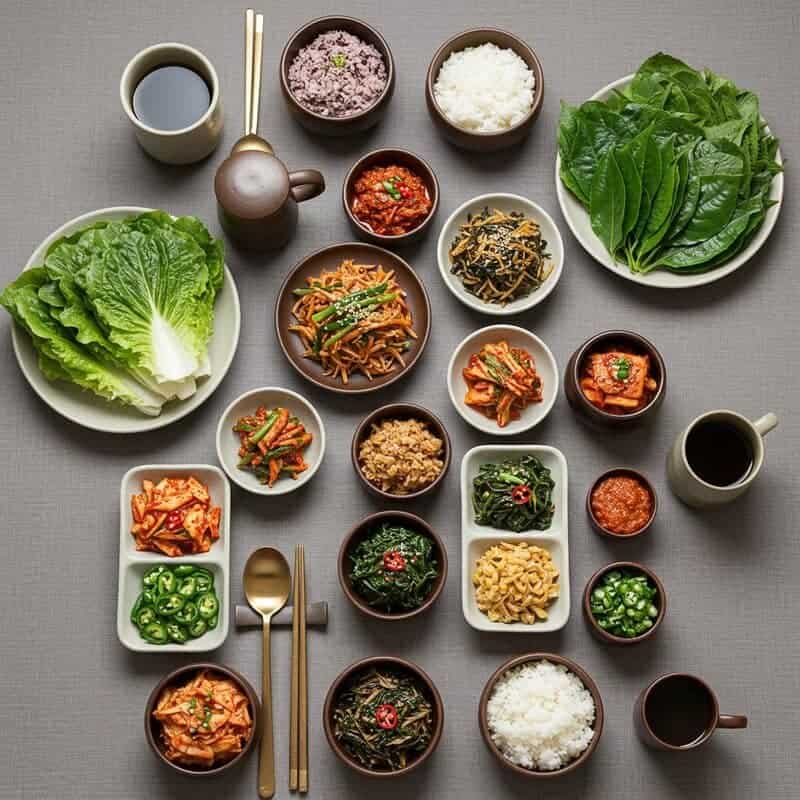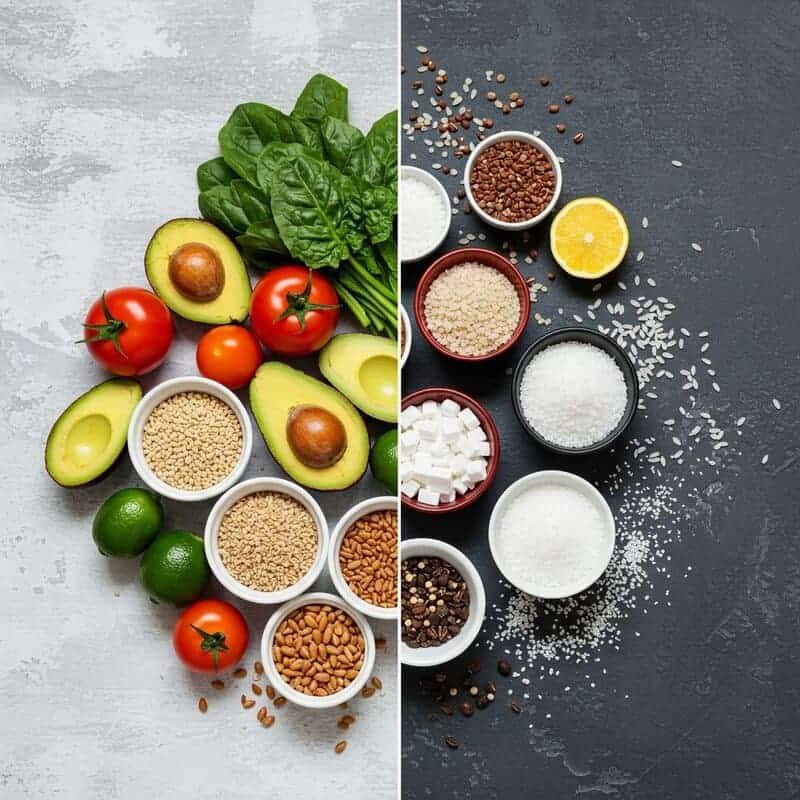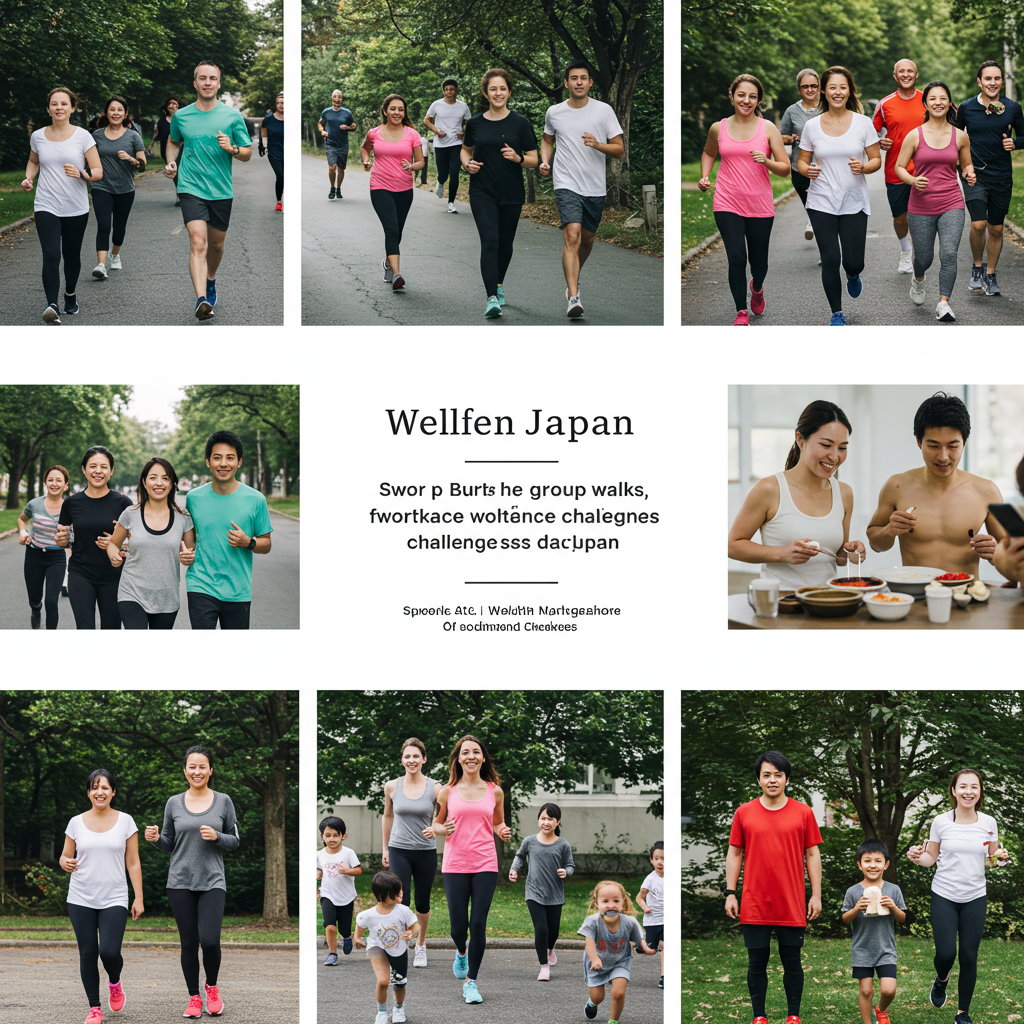Slim Nations Outsmarting U.S. Waistlines: See the Hacks
Obesity rates in the United States have soared to over 42%, ranking among the highest globally, according to the CDC. In stark contrast, countries like Japan and Switzerland maintain rates below 10%, thanks to cultural habits and public health strategies (OECD). The difference isn’t just about calories—our metabolic systems play a crucial role in how our bodies process food. Yet, one of America’s biggest hurdles remains delayed behavioral change, with many resisting healthier habits until health issues arise. Understanding how slimmer nations outsmart obesity can offer practical hacks for shrinking U.S. waistlines and transforming lives.
1. Walking as a Primary Commute

In many slim nations, walking is seamlessly woven into daily life. For example, in Japan, nearly everyone walks to public transit, often covering several thousand steps before even reaching work or school. The Netherlands is also renowned for its pedestrian-friendly cities, where walking and cycling are prioritized over car use (OECD). This frequent movement dramatically reduces sedentary time and keeps metabolic rates higher throughout the day.
In contrast, the U.S. is heavily car-dependent—over 85% of Americans commute by car, according to the U.S. Census Bureau. This reliance on vehicles means fewer opportunities for natural calorie burn. To incorporate more walking, try parking farther from entrances, choosing stairs over elevators, or scheduling regular walking breaks.
Even brief walks after meals can help regulate blood sugar and support weight management. By weaving these habits into daily routines, Americans can emulate the active lifestyles of slimmer nations and take meaningful steps toward better health.
2. Smaller Plate Culture

In countries like France and Italy, traditional dining is marked by modest portions artfully arranged on smaller plates. This custom doesn’t just elevate the aesthetic of meals—it’s a clever psychological tactic that helps diners feel satisfied with less. Research shows that using smaller dishware can significantly reduce calorie intake, as our brains use visual cues to gauge fullness (NIH).
By contrast, American plate and portion sizes have steadily grown, often leading to “portion distortion” and mindless overeating. In Mediterranean cultures, slower eating and savoring food is common, allowing satiety signals to kick in before excess calories are consumed.
To adopt this slim-nation strategy, swap out oversized dinner plates for smaller ones and serve meals in courses instead of all at once. Take time to enjoy each bite, and pause between servings. These mindful habits can reset your body’s natural satiety cues and make portion control effortless. With consistent practice, the smaller plate culture can help curb overeating and support long-term weight management.
3. Fresh Markets Over Supermarkets

In countries like Greece and Spain, open-air markets—known as laiki or mercado—are staples of community life. Residents often shop multiple times a week, choosing vibrant, seasonal produce and freshly caught seafood. This routine supports diets rich in fruits, vegetables, and whole foods, while naturally reducing reliance on ultra-processed snacks and sugary beverages. According to the NIH, regular consumption of fresh foods is linked to lower obesity rates and improved metabolic health.
In contrast, U.S. shoppers typically visit supermarkets less frequently and often gravitate toward packaged, shelf-stable items for convenience. This shift has contributed to higher intake of processed foods and added sugars.
To channel the success of Mediterranean nations, consider visiting local farmers markets or produce stands whenever possible. Start meal planning around seasonal ingredients and make fresh fruits and vegetables the centerpiece of your plate. Even small changes—like swapping chips for sliced cucumbers or apples—can help prioritize fresher options and support better health outcomes in the long run.
4. Plant-Based Diets as Norm

In nations like Israel and India, plant-forward eating isn’t a trend—it’s a cultural norm. Traditional Israeli cuisine features dishes rich in vegetables, legumes, and grains, while Indian meals are often centered around lentils, chickpeas, and a rainbow of seasonal produce. Research consistently links these dietary patterns to better weight management and metabolic health (Harvard T.H. Chan School of Public Health).
Fiber, abundant in plant foods, slows digestion, keeps you fuller for longer, and helps regulate blood sugar. Additionally, phytochemicals—compounds found in colorful fruits and vegetables—offer powerful antioxidant and anti-inflammatory benefits, supporting a healthy metabolism.
To ramp up your plant intake, start by adding an extra serving of vegetables to meals or swapping animal protein for beans or lentils a few times a week. Try experimenting with global recipes like Israeli salads or Indian dal to make plant-based eating exciting. Gradually increasing the proportion of plants on your plate can help you harness the metabolic advantages enjoyed by slimmer nations.
5. Social Eating, Not Solo Snacking

In Mediterranean countries such as Greece, Italy, and Spain, meals are cherished social occasions rather than rushed, solitary affairs. Family and friends gather around the table, often lingering over multiple courses and sharing conversation. Research suggests that communal eating encourages slower eating, better portion awareness, and more mindful enjoyment of food (NIH). This cultural norm contrasts sharply with the “eat on the go” mentality prevalent in the U.S., where solo snacking and distracted dining are common. Eating with others naturally slows the pace, allowing time for satiety signals to register and helping to prevent overeating. To foster this healthy habit, prioritize shared meals with friends or family, even if just a few times a week. Make dinner a screen-free time, set the table, and focus on conversation. If busy schedules make daily family meals challenging, consider weekend brunches or occasional potlucks. By embracing social eating traditions, you can enhance enjoyment, improve awareness of portions, and cultivate a healthier relationship with food.
6. Minimal Processed Snacks

Countries like South Korea have notably lower obesity rates, in part due to their limited consumption of processed snack foods. Traditional Korean diets revolve around fresh vegetables, rice, and fermented dishes, with packaged, sugary, or fatty snacks occupying a much smaller role than in the U.S. (NIH). This approach naturally curbs excessive sugar, sodium, and unhealthy fat intake, all of which are linked to weight gain and metabolic issues. In contrast, American pantries often overflow with chips, cookies, and candy, contributing to frequent, mindless snacking and excess calorie consumption. To adopt this slim-nation strategy, start by reading ingredient labels carefully and steering clear of snacks with long lists of additives or hidden sugars. Opt for whole food snacks such as fruit, nuts, yogurt, or sliced vegetables. Preparing simple snacks at home can also help you avoid processed pitfalls. Making small, mindful swaps will reduce your reliance on ultra-processed foods and support healthier, sustainable habits.
7. Built-In Daily Movement

In Scandinavian countries like Sweden, Denmark, and Norway, daily movement is woven seamlessly into routines. Residents frequently walk or cycle as part of their commute, thanks to well-designed infrastructure and a cultural emphasis on being active outdoors. Public spaces such as parks, trails, and bike lanes are accessible and inviting, encouraging everyone from children to seniors to stay in motion (OECD). This approach promotes higher activity levels without requiring structured gym time—a stark contrast to the sedentary lifestyle common in car-centric areas of the U.S. Regular, low-intensity movement supports a healthy metabolism and helps prevent gradual weight gain. To integrate more movement, look for opportunities to walk or bike instead of driving short distances. Take the stairs whenever possible, or set reminders for hourly stretch or movement breaks, especially during long workdays. Outdoor activities, such as gardening or playing with kids, can make exercise feel like a natural part of your day. Building in daily movement—even in small increments—can deliver long-lasting benefits for your waistline and overall well-being.
8. Culturally Embedded Mindful Eating

In Japan, the practice of hara hachi bu—eating until you’re about 80% full—has deep cultural roots and is linked to remarkable longevity and low obesity rates (Blue Zones). This mindful approach encourages people to slow down, pay attention to hunger cues, and stop eating before feeling stuffed. Slow eating also aids digestion, allowing the body to better process nutrients and send satiety signals to the brain. Research supports that mindful, unrushed eating can reduce overeating and help with weight management (Harvard T.H. Chan School of Public Health). To cultivate mindful eating, begin by sitting down for meals without distractions like screens or multitasking. Chew each bite thoroughly and pause between mouthfuls. Try rating your hunger and fullness on a scale before, during, and after eating. Slowing down helps you tune in to your body’s natural cues—making it easier to avoid overeating and enjoy your food more fully, just as many slim nations do.
9. Regular Mealtime Routines

In Switzerland, regular mealtime routines are a cornerstone of healthy living. The Swiss typically eat breakfast, lunch, and dinner at set times each day, with minimal snacking in between. This structured approach helps regulate metabolism, as the body anticipates and efficiently processes food when meals are consistent (Swissinfo). Studies have shown that irregular eating patterns are linked to weight gain and metabolic disturbances, while consistent routines can support stable blood sugar and appetite control (NIH). This is in contrast to the American tendency toward erratic meal schedules and frequent grazing. To establish a Swiss-inspired routine, aim to eat your main meals at roughly the same times each day and set aside time to enjoy them without rushing. Plan your day around these anchor points and resist the urge to snack mindlessly. If your schedule is unpredictable, start with one regular mealtime and gradually build from there. This simple structure can foster a healthier metabolism and more mindful eating habits.
10. Prioritizing Breakfast

In countries like Turkey and Germany, breakfast is considered the most important meal of the day—and it shows in their traditional spreads. Turkish breakfasts feature eggs, cheeses, olives, tomatoes, cucumbers, and whole-grain breads, while Germans enjoy hearty rye breads, lean meats, and fruit. These balanced, nutrient-rich meals provide sustained energy and help regulate appetite throughout the day (NIH). Research demonstrates that people who eat substantial breakfasts tend to have better blood sugar control and are less likely to overeat later (Harvard Health). In contrast, many Americans skip breakfast or opt for sugary, processed options, leading to energy crashes and mid-morning hunger. To build a better breakfast, start with a combination of protein (like eggs or yogurt), healthy fats (nuts or avocado), and fiber-rich carbs (whole-grain toast or fruit). Prepare ingredients the night before for busy mornings. Prioritizing a hearty, unprocessed breakfast can help stabilize appetite, boost focus, and set the tone for healthier choices all day.
11. Culinary Education from Youth

In Finland, food education is a vital part of the school curriculum from an early age. Finnish students learn about nutrition, meal planning, and practical cooking skills, which helps foster a healthy relationship with food for life (OECD). This hands-on approach encourages children to appreciate fresh ingredients and equips them to make nutritious choices as adults. Studies indicate that early culinary education leads to better food literacy and healthier eating habits well into adulthood. In contrast, many American children receive little formal food education, often relying on convenience foods or missing out on essential cooking skills. To bring this Finnish-inspired strategy home, involve children in simple cooking tasks like washing vegetables, measuring ingredients, or assembling salads. Make family meals a collaborative effort and explore new recipes together. Even small, shared kitchen experiences can build confidence and curiosity around healthy eating. Prioritizing culinary education from a young age sets the foundation for a lifetime of mindful, nutritious choices.
12. Fermented Foods for Gut Health

In nations like South Korea, kimchi—a spicy, fermented cabbage dish—is a dietary staple, while Germany and Eastern European countries savor sauerkraut and other pickled vegetables. In Greece and the Mediterranean region, yogurt is a daily fixture. These fermented foods are rich in probiotics, which nourish the gut microbiome and support digestion, immunity, and metabolic health (Harvard Health). Emerging research links a diverse gut microbiome with lower rates of obesity and improved weight regulation (NIH). In contrast, highly processed Western diets tend to lack these beneficial bacteria, contributing to digestive issues and metabolic challenges. To include more fermented foods, try adding a spoonful of kimchi or sauerkraut to meals, enjoying unsweetened yogurt as a snack, or experimenting with kefir or miso. Look for products with live, active cultures and minimal added sugars. By making fermented foods a regular part of your diet, you can support gut health and tap into one of the world’s oldest hacks for a slimmer waistline.
13. Home Cooking Over Takeout

In Portugal and Poland, home-cooked meals remain the norm rather than the exception. Families often gather around the table for simple, nourishing dishes made from scratch, giving them full control over the quality and quantity of ingredients. Studies show that frequent home cooking is associated with healthier eating patterns, lower calorie intake, and reduced risk of obesity (NIH). By contrast, reliance on takeout and restaurant meals is much higher in the U.S., where portion sizes tend to be larger and dishes are often higher in salt, sugar, and unhealthy fats. To embrace this slim-nation habit, set aside time each week for meal planning and simple food prep. Prepare staples like grains, roasted vegetables, and lean proteins in advance, so assembling meals is easy—even on busy days. Batch cooking soups, stews, or casseroles can also provide nutritious options throughout the week. Prioritizing home cooking not only supports better portion control but also fosters a deeper connection to what you eat.
14. Cultural Taboo of Oversized Portions

In countries like Sweden and Japan, there’s a strong social stigma attached to overeating or leaving the table uncomfortably full. Swedish meals are typically modest, with diners encouraged to savor their food without excess. Similarly, the Japanese practice of hara hachi bu (stopping at 80% fullness) is culturally ingrained and widely respected. These norms help people self-regulate and prevent habitual overconsumption (Blue Zones). In contrast, American dining culture often celebrates “value meals” and oversized portions, which can distort perceptions of what constitutes a normal serving. Social pressure in slim nations acts as a subtle, yet effective, check on portion sizes and eating pace. To apply these principles, set personal guidelines for portion sizes by using smaller plates, serving food in the kitchen rather than at the table, and pausing before returning for seconds. Pay attention to feelings of satisfaction rather than fullness, and remind yourself that it’s okay to leave food if you feel content. Over time, these habits can help recalibrate your sense of appropriate portions and support a healthier lifestyle.
15. Tea-Drinking Rituals

In China and Morocco, tea is more than just a beverage—it’s a cherished daily ritual. Whether it’s delicate green tea in China or sweet, minty tea in Morocco, these traditions foster relaxation, social connection, and mindful sipping. Tea contains natural compounds like catechins and polyphenols that have been shown to boost metabolism and gently suppress appetite (Healthline). Unlike many sugary sodas and processed drinks prevalent in the U.S., tea is typically calorie-free and hydrating. Studies suggest that swapping sugar-laden beverages for unsweetened tea can reduce daily calorie intake and support weight control (NIH). To incorporate this hack, try enjoying a soothing cup of green, black, or herbal tea with meals or as a mid-afternoon ritual. Experiment with spices or fresh herbs for variety. Gradually reduce added sugars and avoid bottled teas with hidden calories. Making tea a daily habit can help replace empty-calorie drinks and add a calming, healthful pause to your day.
16. Low Reliance on Elevators

In many European cities, choosing the stairs over elevators is a daily norm. Older buildings often lack elevators entirely or have them tucked away, making stair use a practical and efficient choice. This everyday activity significantly boosts energy expenditure and helps maintain cardiovascular fitness (NIH). While in the U.S., elevators and escalators are often the default, opting for the stairs—even just a few flights—can add up to hundreds of extra calories burned each week. This small, consistent movement forms a natural part of active living in slimmer nations. To build this habit, look for opportunities to take the stairs at work, in apartment buildings, or even in public spaces like subway stations. If the climb seems daunting, start gradually by walking one or two flights and increasing over time. Place visual reminders or motivational notes near stairwells to encourage this choice. By making stair-climbing routine, you can effortlessly integrate more activity into your day and support a healthier weight.
17. Whole Grains as Staples

In Nordic countries, oats and barley are breakfast and dinner mainstays, while throughout Asia, brown rice is a dietary cornerstone. These whole grains are rich in fiber, vitamins, and minerals—providing steady energy and helping to regulate appetite and digestion (Harvard T.H. Chan School of Public Health). Diets high in whole grains are consistently linked to lower body weight and reduced risk of chronic diseases. In contrast, refined grains such as white bread and pasta, which are more common in the U.S., lack these beneficial nutrients and can cause spikes in blood sugar. To embrace this global hack, start by swapping white rice for brown or wild rice, and choose whole-grain oats or barley for breakfast instead of sugary cereals. Try whole-grain bread and pasta, or experiment with ancient grains like farro and quinoa. Small, gradual changes can help retrain your palate and make whole grains a satisfying, everyday staple—just as they are in some of the world’s slimmest nations.
18. Minimal Sugary Soda Consumption

In Norway and Italy, sugary sodas are rarely a fixture at the table. Norwegians often opt for sparkling water, herbal teas, or milk, while Italians typically enjoy water or small servings of coffee with meals. This cultural aversion to sugar-sweetened beverages plays a significant role in maintaining healthier average body weights (NIH). High soda consumption, by contrast, is a well-documented driver of weight gain and obesity in the U.S. Cutting out just one can of soda a day can lead to significant calorie reduction and weight loss over time (CDC). To follow the example of slimmer nations, replace sodas with healthier hydration options. Try infusing water with fresh fruit or herbs for flavor, sipping unsweetened iced tea, or enjoying sparkling water with a splash of citrus. Make these alternatives visible and convenient at home and work. Reducing sugary drink intake is one of the simplest and most effective steps toward a trimmer waistline and better health.
19. Emphasis on Seasonal Eating

Both France and Japan place great value on eating with the seasons. In France, local markets brim with produce that reflects the time of year—think asparagus in spring, tomatoes in summer, and root vegetables in winter. Similarly, Japanese cuisine celebrates shun, the idea of savoring foods at their natural peak of freshness and flavor (Japan National Tourism Organization). Seasonal eating not only ensures a rich variety of nutrients but also often means fewer preservatives and additives. This approach encourages people to rotate their food choices, supporting a more balanced and diverse diet. In contrast, out-of-season, ultra-processed foods dominate many American grocery carts, reducing both nutrition and enjoyment. To adopt this tradition, plan meals around what’s fresh at local farmers markets or produce sections. Experiment with new recipes featuring in-season fruits and vegetables. Even growing a small herb or vegetable garden can boost your seasonal awareness. Prioritizing seasonal eating can bring more flavor, nutrition, and pleasure to your meals—while helping keep your waistline in check.
20. Family-Style Dining

In Spain and Lebanon, shared dish dining is at the heart of the mealtime experience. Whether it’s Spanish tapas or Lebanese mezze, dishes are placed at the center of the table for everyone to sample and enjoy at their own pace. This approach naturally encourages slower eating, more conversation, and greater attention to satiety cues (NIH). Family-style dining also supports portion control, as people tend to serve themselves smaller amounts and are less likely to overeat compared to pre-plated, oversized servings. The social aspect further slows the meal, giving the body time to register fullness and satisfaction. To bring this practice home, serve meals in large bowls or platters at the table and let everyone help themselves. Encourage tasting and sharing a variety of dishes, and focus on conversation rather than rushing through the meal. Avoid distractions like screens to enhance the communal experience. Family-style dining fosters mindful eating, stronger bonds, and a healthier approach to food—mirroring traditions in some of the world’s slimmest cultures.
21. High Fish Consumption

In Iceland and Japan, fish is a dietary mainstay, often featured in daily meals. These countries are known for their high intake of fatty fish like salmon, mackerel, and sardines, which are packed with omega-3 fatty acids. Omega-3s are renowned for their anti-inflammatory effects and are associated with lower rates of heart disease and obesity (Harvard T.H. Chan School of Public Health). Regular fish consumption helps regulate appetite, supports metabolic health, and promotes lean protein choices over higher-fat meats. In contrast, many Americans consume more red and processed meats, which can contribute to inflammation and weight gain. To capture the benefits of these omega-3-rich diets, aim to include fish in your meals two to three times a week. Choose lean, oily varieties such as salmon, trout, or sardines, and try grilling, baking, or steaming for healthier preparation. When selecting proteins, prioritize seafood, skinless poultry, or plant-based options. Adopting these habits can help support a slimmer waistline and improved overall health.
22. Limiting Fast Food Access

In South Korea and Italy, fast food plays a far less prominent role than in the U.S. South Korea employs regulatory measures that restrict fast food advertising to children and promote traditional cuisine in schools (NIH). Meanwhile, Italy’s deep-rooted food culture favors leisurely, home-cooked meals and social dining, making fast food less appealing and less accessible compared to American norms. These cultural and regulatory strategies help curb the spread of calorie-dense, nutrient-poor foods and support healthier eating habits. Easy access to fast food in the U.S. has contributed to increased portion sizes, higher calorie intake, and a decline in nutritional quality. To reduce reliance on fast food, plan meals and snacks ahead of time and keep nutritious options readily available. Prepare grab-and-go foods like cut vegetables, fruit, or whole-grain wraps for busy days. When eating out, choose restaurants that offer fresh, minimally processed dishes and avoid upsizing portions. Embracing these strategies can help shift your habits toward a more balanced, home-based approach to eating, inspired by some of the world’s slimmest nations.
23. Standing Desks in Offices

In Scandinavian workplaces, standing desks have become a common sight and are even mandated in some office environments. Sweden, in particular, leads the way, with many employees alternating between sitting and standing throughout the workday. This approach is linked to increased energy expenditure, improved posture, and reduced sedentary time (BBC). Prolonged sitting has been associated with weight gain, metabolic issues, and higher risks for chronic diseases. Standing desks offer a practical solution, making it easier to incorporate natural movement and light activity into the workday, as embraced by slim nations in the north. To bring more standing into your routine, request a height-adjustable desk or use a tall table for certain tasks. Set a timer to remind yourself to stand or stretch every 30-60 minutes, and take phone calls or meetings while on your feet when possible. Small changes like these can help counteract the negative effects of sedentary office life and support a healthier, more active lifestyle.
24. Urban Design for Activity

Cities like Copenhagen are global leaders in urban design that naturally encourages movement. Wide sidewalks, extensive bike paths, and vibrant public spaces make walking and cycling easy, safe, and enjoyable for residents of all ages. As a result, nearly half of Copenhagen’s population bikes to work or school every day, supporting both environmental sustainability and public health (Bloomberg). This active infrastructure is linked to lower obesity rates and increased daily energy expenditure. In contrast, many U.S. cities are designed for car travel, limiting opportunities for incidental exercise and contributing to sedentary lifestyles. To advocate for similar changes in your community, support local initiatives for bike lanes, walking trails, and accessible parks. Participate in neighborhood clean-ups or community garden projects that enhance outdoor spaces. Even choosing to walk or bike for errands can demonstrate demand for active infrastructure. By engaging with urban planning efforts, you can help create environments where movement is the default—mirroring the healthy, slim-focused cities of the world.
25. Light Evening Meals

In Greece and Japan, the tradition of eating a light dinner is deeply ingrained in the culture. Greek evening meals often focus on salads, grilled vegetables, and small portions of lean protein, while the Japanese may enjoy a simple bowl of miso soup, rice, and vegetables. These lighter meals support restful sleep and help the body’s overnight metabolism function optimally (Sleep Foundation). Heavy, late-night eating is associated with poorer sleep quality and a greater risk of weight gain, as the body has less time to digest large meals before rest. In contrast, lighter dinners reduce digestive burden and can help regulate appetite the following day. To adopt this healthy habit, aim for an earlier, lighter dinner with a focus on vegetables, whole grains, and lean proteins. Avoid rich sauces and heavy starches in the evening, and give yourself two to three hours between your last meal and bedtime. If hunger strikes late, opt for a small snack like fruit or yogurt. Embracing light evening meals can contribute to better sleep and a healthier waistline.
26. Embracing Fasting Periods

Intermittent fasting is a longstanding tradition in many Middle Eastern and Buddhist cultures. For example, Muslims observe daily fasting during Ramadan, abstaining from food and drink from sunrise to sunset, while Buddhist monks often limit eating to certain hours each day. These practices have been shown to provide metabolic benefits, including improved insulin sensitivity, reduced inflammation, and support for healthy weight management (NIH). Fasting allows the body to shift from storing to burning fat, and gives digestive organs a restorative break. However, it’s important to approach fasting safely and mindfully, especially for beginners or those with medical conditions. To incorporate fasting into your routine, consider starting with a simple overnight fast—such as a 12-hour window between dinner and breakfast. Gradually work up to longer fasting periods if comfortable, and always prioritize hydration. Avoid overeating during non-fasting hours and focus on nutrient-dense foods. Consult a healthcare provider before making major dietary changes. By thoughtfully embracing fasting intervals, you can harness an age-old metabolic tool for better health and a slimmer waistline.
27. Active Socializing

In Argentina and Russia, social gatherings often revolve around movement rather than sedentary activities. In Argentina, it’s common for friends to meet for group walks, outdoor games, or spontaneous tango dances in public squares. Russians frequently enjoy group hikes, ice skating, or communal sports in parks and forests (The New York Times). These traditions boost non-exercise activity thermogenesis (NEAT), which is the energy burned during daily activities outside of formal workouts. Such movement helps maintain a healthy weight, supports cardiovascular health, and strengthens social bonds. To infuse more activity into your social life, suggest walking meetings, organize group hikes or bike rides, or invite friends for a dance night instead of a movie marathon. Choose active outings—like bowling, mini golf, or frisbee in the park—over sitting in a café. By making socializing more dynamic, you can elevate your daily activity levels and enjoy the benefits of active, joyful connections modeled by slim nations around the world.
28. Limiting Screen Time

In Switzerland and other slim nations, recreational screen time—such as television, gaming, or scrolling on mobile devices—is noticeably lower than in the U.S. Many Swiss families prioritize outdoor activities, hobbies, or face-to-face socializing over hours of passive entertainment (Swissinfo). Reduced screen time is associated with fewer mindless snacks and less exposure to food advertising, both of which can drive overeating and weight gain. Studies show that children and adults who spend less time in front of screens tend to have healthier BMI and better lifestyle habits. To build a screen-free routine, set daily or weekly limits on recreational device use and schedule regular breaks from all screens. Replace evening TV with a family game, craft project, or neighborhood walk. Designate tech-free zones, such as the dining table or bedrooms, to reinforce these habits. By consciously limiting screen time, you can minimize mindless snacking and create space for more active, fulfilling pursuits.
29. Universal Access to Public Transit

In Singapore and Paris, public transit systems are not only efficient but also a central part of daily life for millions. Residents regularly walk to and from train stations or bus stops, seamlessly integrating physical activity into their commutes. This routine movement supports healthier weights and reduces overall sedentary time (NIH). In contrast, car-centric cultures like the U.S. often miss out on these built-in opportunities for movement. The simple act of using public transit can add thousands of extra steps to a person’s daily routine, contributing to higher energy expenditure and better cardiovascular health. To maximize the benefits of public transit, choose routes that require a bit of walking or standing. Get off one stop early to add a short walk, take stairs in stations, and use waiting times for gentle stretches. If you live in a less transit-friendly area, seek out park-and-ride or community shuttle programs. Embracing transit-based routines can make daily activity effortless, echoing the habits of some of the slimmest cities around the globe.
30. Cooking with Healthy Fats

In Mediterranean countries such as Greece and Spain, olive oil is a dietary staple, used for everything from sautéing vegetables to dressing salads. Likewise, in South America, avocado oil is a favored ingredient, especially in regions where avocados grow abundantly. These oils are rich in monounsaturated fats, which support heart health, reduce inflammation, and may help regulate body weight (Harvard T.H. Chan School of Public Health). Unlike saturated fats from butter or processed oils, healthy fats can improve cholesterol levels and promote a feeling of fullness. Populations that favor these oils often enjoy lower rates of metabolic syndrome and obesity. To adopt this hack, swap butter, margarine, or shortening for extra virgin olive oil or avocado oil in cooking and baking. Use these oils to dress salads, drizzle over roasted vegetables, or blend into homemade dips. Start gradually by replacing less healthy fats in your favorite recipes. By prioritizing healthy oils, you can boost the nutritional quality of your meals and support a slimmer, healthier lifestyle.
31. Water-Rich Meals

In Vietnam, steaming bowls of pho and vegetable-packed soups are everyday comfort foods, while in Russia, nourishing stews and broths are staples during cold months. These water-rich meals contribute to hydration, slow down eating, and help promote satiety with fewer calories (NIH). Research shows that starting a meal with soup or including broth-based dishes can reduce total calorie intake, as the volume and warmth increase feelings of fullness. Water-rich meals also encourage the consumption of vegetables and lean proteins, supporting balanced nutrition and healthy weight. To bring this practice into your kitchen, add vegetable or chicken soups, lentil stews, or gazpacho to your weekly menu. Use broth as a base for whole grains or simmer mixed greens into a light soup for a quick, filling meal. Focus on clear or lightly creamy recipes, avoiding heavy creams and excess salt. By incorporating more water-based dishes, you can nourish your body, stay hydrated, and naturally eat less—mirroring habits found in some of the world’s healthiest cultures.
32. Eating at the Table, Not the Couch

In Italy and Germany, sitting at a table for meals is a long-standing social norm. Meals are treated as dedicated events, often shared with family or friends, and rarely rushed or eaten in front of a television. This custom helps foster mindful eating, encouraging people to savor their food, notice hunger cues, and enjoy conversation (NIH). Eating at the table reduces distracted eating, which is associated with higher calorie intake and reduced satisfaction. In contrast, snacking on the couch while watching TV can easily lead to mindless overeating and weaker connections between food and fullness. To adopt this healthy habit, create a pleasant, screen-free dining area—whether it’s a kitchen table, breakfast nook, or outdoor patio. Set the table, even for solo meals, and put away phones or devices. Take a few moments to appreciate your food before digging in, and focus on the sensory experience of eating. By reclaiming the table as your primary mealtime space, you can strengthen mindful eating habits and support a trimmer waistline, just like in some of Europe’s healthiest countries.
33. Cultural Respect for Satiety Cues

In cultures such as Thailand and Finland, children are taught from a young age to eat according to their hunger and stop when they feel full. Parents and teachers emphasize listening to the body’s signals, rather than insisting on “cleaning the plate.” This early respect for satiety cues builds strong appetite regulation and helps prevent overeating later in life (NIH). These practices contrast with the pressure many American children feel to finish everything served, regardless of hunger. By honoring fullness, people in these countries maintain a more intuitive and healthy relationship with food throughout their lives. To follow this approach, pause mid-meal and check in with your hunger and fullness levels. Serve smaller portions and allow yourself or your children to take more only if still hungry. Avoid eating out of boredom or habit, and remind yourself that it’s okay to leave food on the plate. Practicing mindful eating and respecting satiety cues can reset your body’s natural appetite controls, supporting sustainable weight management and wellbeing.
34. Avoiding All-Day Grazing

In France and Korea, structured meal patterns are the norm—typically three main meals and perhaps one planned snack, rather than constant nibbling throughout the day. French culture, in particular, views meals as special moments, discouraging eating outside designated times. Korean families often sit down together for clearly defined meals, with minimal snacking in between (NIH). This structure helps the body’s hunger and satiety hormones function optimally, curbs mindless calorie intake, and reduces the risk of overeating. In contrast, all-day grazing—common in the U.S.—often leads to excess calories and less awareness of real hunger cues. To break the grazing habit, establish clear meal and snack times and stick to them as consistently as possible. If you get hungry between meals, choose a single, satisfying snack and enjoy it mindfully at the table. Keep tempting snack foods out of sight, and focus on activities or hydration instead of eating when bored. Structured eating patterns can restore your appetite signals and make healthy weight management easier.
35. Prioritizing Sleep Hygiene

In Japan and Sweden, the importance of adequate, quality sleep is well-recognized as a foundation of good health. Japanese culture, despite its fast pace, emphasizes rituals like evening baths and winding down to promote restful sleep, while Swedes value regular sleep schedules and calm bedroom environments (Sleep Foundation). Scientific research links poor sleep to disrupted metabolism, increased hunger hormones, and a higher risk of weight gain. Chronic sleep deprivation can sabotage even the healthiest eating and exercise habits, making waistline control more difficult (CDC). To improve sleep hygiene, establish a regular bedtime and wake time, limit screen exposure before bed, and create a dark, cool, comfortable sleep environment. Consider calming routines such as reading, meditation, or gentle stretching. Avoid heavy meals and caffeine in the evening. By making sleep a priority—just like the world’s healthiest cultures—you’ll support a balanced metabolism, better appetite regulation, and sustainable weight management.
36. Spicy Foods to Boost Satiety

In India and Thailand, spicy foods are a daily staple. Curries, stir-fries, and soups are often loaded with chili peppers and aromatic spices. The key compound in chili, capsaicin, has been shown to reduce appetite, increase energy expenditure, and promote feelings of fullness (NIH). Populations with spicy diets tend to have lower rates of obesity, in part due to the appetite-suppressing and metabolism-boosting effects of capsaicin. Spices like ginger, turmeric, and black pepper further enhance digestion and can add depth and variety to healthy meals. To incorporate this strategy, experiment with adding fresh or dried chili, jalapeño, or crushed red pepper to your favorite dishes. Try traditional Indian or Thai recipes, such as lentil dal or tom yum soup, to enjoy diverse, flavorful heat. Start with small amounts and gradually increase as your palate adapts. Spicing up your meals can help rein in your appetite, increase meal satisfaction, and support healthy weight management—just like in some of the world’s most vibrant cuisines.
37. Prioritizing Food Quality Over Quantity

In France and Belgium, culinary culture centers on the appreciation of high-quality, fresh ingredients. Shoppers frequent specialty markets, bakeries, and cheese shops, seeking out artisanal foods with robust flavors and superior textures. This emphasis on quality translates to greater satisfaction with smaller portions, reducing the urge to overeat (NIH). French and Belgian meals are often simple but made with care—think of a small wedge of rich cheese, a slice of crusty bread, or perfectly ripe fruit. By savoring each bite, people feel more content and less likely to crave seconds or additional snacks. This approach stands in stark contrast to the “bigger is better” mentality common in many other countries. To adopt this mindset, focus on buying fewer but better ingredients. Shop at farmers markets, local butchers, or specialty stores when possible. Choose items at their seasonal peak and splurge occasionally on a small amount of a favorite delicacy. Enjoy meals slowly and engage all your senses. By prioritizing food quality, you can feel satisfied on less and support both health and culinary pleasure.
38. Public Health Campaigns

Countries like Australia and Singapore have implemented robust, government-led public health campaigns to guide citizens toward healthier food choices. Australia’s “Eat for Health” initiative and Singapore’s “Healthy Living Everyday” offer practical nutrition education, clear food labeling, and widespread media outreach. These campaigns have contributed to increased public awareness, healthier eating habits, and even reductions in obesity rates. By providing trustworthy, science-backed guidelines, these programs help people make informed choices in grocery stores, restaurants, and at home. Interactive resources, such as online meal planners and nutrition calculators, empower individuals to take control of their wellbeing. To access reliable health information, turn to well-established organizations such as the CDC or NHLBI. Look for government or university-backed guides, and be cautious with unverified diet trends online. By leveraging reputable resources and staying informed, you can confidently make choices that align with the healthy habits promoted in some of the world’s slimmest nations.
39. On-the-Go Fruit Snacks

In Brazil and Israel, grabbing a piece of fresh fruit is a common snack choice for both kids and adults. Colorful markets and street vendors offer bananas, apples, oranges, and tropical options like papaya or mango, making fruit the go-to for quick, energizing bites. This habit not only satisfies sweet cravings but also helps people easily meet their daily fiber and vitamin needs (NIH). Choosing fruit over processed snacks supports better digestion, steadier energy, and weight management. The natural sugars in fruit come balanced with fiber, which slows absorption and promotes prolonged satiety. For convenient, portable fruit snacks, keep a bowl of ready-to-eat whole fruits on your kitchen counter or pack sliced apples, grapes, or orange segments in reusable containers. Try pairing fruit with a handful of nuts for added protein and healthy fats. Dried or freeze-dried fruits (without added sugar) can also be handy for travel. Following Brazil’s and Israel’s example, making fruit your default snack is a tasty, practical way to boost health on the go.
40. Alcohol in Moderation

In France and Japan, alcohol is often enjoyed as part of a meal, but always in moderation. A glass of wine with dinner or a small serving of sake during social gatherings is customary, with a cultural emphasis on savoring the experience rather than consuming large quantities. This approach helps limit empty calorie intake and supports a balanced lifestyle (NIH). Moderate drinking—defined as up to one drink per day for women and two for men—has been associated with better weight control and reduced risk of chronic disease compared to binge drinking or abstaining altogether. Overindulgence, on the other hand, can quickly add hundreds of extra calories and disrupt metabolic health. To follow the example of these slim nations, choose quality over quantity by selecting a favorite wine, sake, or beer and enjoying it slowly, preferably with food. Avoid sugary mixers and alternate alcoholic beverages with water. Be mindful of your limits and save alcohol for special occasions, rather than making it a daily habit. Practicing moderation supports not only your waistline but overall health and well-being.
41. Prioritizing Satiety-Boosting Foods

In Turkey and Italy, meals often feature beans, lentils, and whole grains as staples. Turkish cuisine includes dishes like lentil soup and bean salads, while Italians regularly enjoy minestrone with beans and whole-grain pasta. These foods are rich in fiber and protein, both of which are known to increase satiety and help control appetite (Harvard T.H. Chan School of Public Health). Satiety-boosting foods help you feel fuller for longer, reducing the urge to snack between meals and supporting healthy weight management. The slow-digesting carbohydrates found in legumes and whole grains also help stabilize blood sugar, further curbing hunger. To build satiety into your meals, incorporate beans, chickpeas, or lentils into soups, salads, and casseroles. Swap white bread or rice for whole-grain versions, and experiment with grain bowls or veggie-packed pasta dishes. Pair these ingredients with lean proteins and healthy fats for a balanced plate. Prioritizing these filling, nutrient-dense foods—just like the Turks and Italians—can help you stay satisfied and make mindful eating easier.
42. Fostering a Positive Food Relationship

In Scandinavian and Japanese cultures, food is approached without guilt or moral judgment. Meals are seen as opportunities for nourishment, pleasure, and social connection, not sources of anxiety or shame. This balanced mindset supports sustainable, healthy eating habits, as individuals are less likely to engage in cycles of restriction and overeating (NIH). Japanese culture, for example, emphasizes ichiju-sansai (one soup, three sides), focusing on variety and balance rather than deprivation. Similarly, Scandinavians practice moderation and savor occasional treats without guilt, fostering a lifelong healthy relationship with food. To cultivate a positive food mindset, avoid labeling foods as “good” or “bad.” Allow yourself to enjoy treats mindfully and in moderation, focusing on the experience rather than any sense of guilt. Practice gratitude for meals and eat with intention, paying attention to hunger and fullness cues. By shifting your perspective, you can break free from restrictive dieting and adopt sustainable habits that support both physical and emotional wellbeing, just like the world’s healthiest cultures.
43. Street Food with Healthy Options

In Vietnam and Thailand, street food culture thrives on fresh, flavorful, and nutrient-rich ingredients. Popular Vietnamese dishes like pho and goi cuon (spring rolls) are loaded with fresh herbs, crisp vegetables, and lean proteins such as shrimp or chicken. Thai street vendors often serve grilled meats, papaya salad, and stir-fries with ample vegetables and aromatic spices (NIH). These options stand out from many Western street foods, which tend to be deep-fried or heavily processed. Choosing fresh, minimally processed street eats supports a lighter, more nutrient-dense diet and makes it easier to manage portion sizes. To make healthier choices when enjoying street food, look for dishes featuring plenty of vegetables, lean proteins, and herbs. Opt for grilled, steamed, or stir-fried foods over fried items. Ask for sauces on the side to control added sugars and sodium. If possible, share dishes to sample a variety of flavors while keeping portions moderate. Embracing the vibrant, wholesome street food traditions of Vietnam and Thailand can add excitement and balance to eating on the go.
44. Celebrating Food Rituals

In India and Greece, traditional food rituals are deeply woven into daily life. Indian meals often begin with a moment of gratitude or a brief prayer, setting a mindful tone for eating. Greek culture celebrates leisurely, multi-course meals that invite conversation, laughter, and reflection, making each mealtime a special event (NIH). These rituals encourage slowing down, appreciating food, and recognizing the effort that goes into its preparation. Mindful eating practices foster a sense of satisfaction and help prevent overeating by giving the body and mind time to register fullness and contentment. To create your own food rituals, try beginning each meal with a moment of thanks, lighting a candle, or sharing something positive with those at the table. Serve meals on special dishes or set the table with care, even for simple occasions. Make time to eat without distractions, focusing on the flavors and textures of your food. By celebrating mealtimes with intention and gratitude, you can nurture a healthier relationship with eating and bring more joy to everyday nourishment.
45. Limiting Artificial Additives

Germany and Japan are known for their strict food purity standards. German regulations, such as the historic Reinheitsgebot (beer purity law), favor minimal, natural ingredients and limit the use of artificial additives and preservatives (German Federal Ministry of Food and Agriculture). In Japan, a cultural and regulatory preference for fresh, unprocessed foods also reduces exposure to synthetic ingredients. Lower intake of artificial colors, flavors, and preservatives is linked to better metabolic health and may help prevent adverse reactions or sensitivities. In contrast, many processed foods in the U.S. contain long lists of unfamiliar additives that can contribute to overeating and poor health outcomes. To minimize additives, focus on whole, minimally processed foods and cook from scratch when possible. Learn to read ingredient labels, avoiding products with lengthy or hard-to-pronounce ingredients. Choose packaged foods with short, simple ingredient lists and seek out brands that prioritize food purity. By following the example set by Germany and Japan, you can reduce exposure to unnecessary additives and support long-term wellness.
46. Using Herbs and Spices for Flavor

Mediterranean and Middle Eastern cuisines are celebrated for their masterful use of herbs and spices. Dishes from Greece, Turkey, and Lebanon are often seasoned with fresh parsley, mint, dill, oregano, sumac, and za’atar. Instead of relying on salt or heavy fats for flavor, these traditions use aromatic blends to create vibrant, satisfying meals (Harvard T.H. Chan School of Public Health). Using herbs and spices not only cuts down on sodium and unhealthy oils but also provides antioxidants and anti-inflammatory compounds. This approach supports cardiovascular health and can help with weight management, as flavorful dishes are more satisfying and encourage mindful eating. To enhance your cooking, experiment with fresh herbs like basil, cilantro, or rosemary, and dried spices such as cumin, coriander, turmeric, and paprika. Add herbs at the end of cooking for a burst of fresh flavor, or use them to brighten salads and roasted vegetables. Keep a variety of seasonings in your pantry to make healthy meals exciting. By following Mediterranean and Middle Eastern traditions, you can elevate nutrition and pleasure at every meal—without excess salt or fat.
47. Savory Rather Than Sweet Breakfasts

In Israel and Turkey, breakfast is a savory affair. The classic Israeli breakfast includes eggs, fresh salads, olives, and cheeses, while Turkish mornings feature tomatoes, cucumbers, feta, olives, and whole-grain breads. This tradition helps avoid the sugar spikes and subsequent crashes that come with sweet pastries or sugary cereals (NIH). Savory breakfasts are packed with protein, healthy fats, and fiber, keeping you fuller longer and stabilizing blood sugar. In contrast, the sweet breakfasts common in the U.S. may lead to increased hunger and overeating later in the day. To make the switch, try scrambled eggs with sautéed vegetables, cottage cheese with sliced tomatoes, or avocado toast with herbs. Prepare a breakfast platter with nuts, olives, and raw vegetables, or make a batch of savory oatmeal with greens and spices. By embracing the savory breakfast habits of Israel and Turkey, you can start your day with lasting energy and better appetite control—setting a positive tone for your food choices all day long.
48. Outdoor Leisure Activities

In Norway and New Zealand, outdoor leisure is a cherished part of daily life. Norwegians embrace friluftsliv—the love of outdoor living—by hiking, cross-country skiing, and swimming in lakes year-round. New Zealanders are equally enthusiastic, enjoying hiking, surfing, cycling, and team sports in their country’s stunning landscapes (NewZealand.com). Regular outdoor activities not only boost calorie burn but also improve mood, reduce stress, and foster social connections. These habits play a significant role in helping residents maintain healthy weights and high levels of overall wellbeing. To add more outdoor activity to your routine, look for local parks, trails, or community pools. Start with short walks, weekend hikes, or join a recreational sports league. Invite family or friends to join you and make it a social event. Even gardening or playing with kids outside counts toward daily movement. By prioritizing outdoor leisure, you can make physical activity enjoyable and sustainable—just like in some of the world’s healthiest countries.
49. Embracing Flavors Over Calories

Mexican and Thai cuisines are celebrated for their bold, vibrant flavors. Mexican food features ingredients like lime, cilantro, chili peppers, and fragrant spices, while Thai cuisine layers sweet, sour, salty, and spicy tastes from herbs, fish sauce, and fresh produce (NIH). These strong flavors help satisfy cravings and make meals memorable, often with less reliance on calorie-dense ingredients. By focusing on flavor, people are more likely to feel content with smaller portions and less likely to overeat out of boredom or lack of satisfaction. This approach also encourages the use of fresh, nutrient-rich ingredients that support a healthy weight. To add bold flavors to your meals, experiment with citrus zest, fresh herbs, garlic, ginger, vinegar, and chili. Try homemade salsas or Thai spice blends, and don’t be afraid to mix sweet and savory elements. Use spices and flavorful condiments instead of heavy creams, cheeses, or extra oils. Letting flavor—not just calories—guide your cooking can make healthy eating more enjoyable and naturally reduce overeating.
50. Social Support for Healthy Choices

In Sweden and Japan, social networks are a powerful force for encouraging healthy habits. In Sweden, group walks, workplace fitness challenges, and communal meals create an environment where healthy choices are part of daily life. Japanese culture reinforces wellbeing through group-based activities, such as morning exercises (radio taiso) and community cooking classes (NIH). These supportive environments make it easier for individuals to stick to nutritious eating and regular activity, as friends, family, and colleagues model and reinforce positive behaviors. Research shows that strong social support is linked to better weight management and greater long-term success with healthy lifestyle changes. To harness the power of social support, share your goals with friends or family and invite them to join you for healthy meals or walks. Consider joining a local club or class, or participate in community wellness events. Celebrate successes together and offer encouragement during setbacks. By surrounding yourself with a supportive network, you can make healthy choices more enjoyable and sustainable—just like in some of the world’s slimmest, most health-conscious societies.
Conclusion

With obesity reaching crisis levels in the U.S., it’s more urgent than ever to learn from nations that have mastered the art of staying slim. These global lifestyle hacks—from mindful eating to built-in daily movement—offer practical, proven ways to reclaim metabolic health and shrink waistlines. Embracing even a few of these habits can help prevent chronic disease and boost overall wellbeing. Take inspiration from around the world: start with small, sustainable changes, and consider regular health screenings to monitor your metabolic status (CDC). By taking action today, you can join millions who are living healthier, happier lives—and help shift the tide in America’s fight against obesity.





